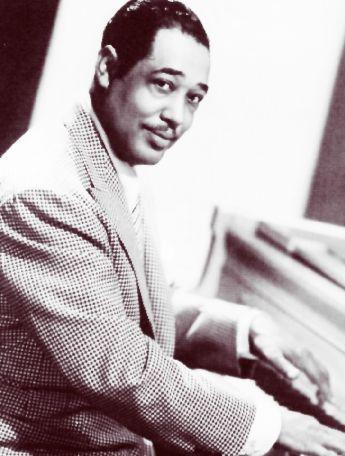指挥家眼中伟大的美国交响乐


交响乐就是为整个管弦乐队所作的奏鸣曲,形成于18世纪中叶的欧洲。交响乐一般分为四个乐章。第一乐章:快板,奏鸣曲式,富有戏剧性。音乐建立在两个性格不同的主题的对比和发展上。第二乐章:慢板,一般为复三部曲式,具有抒情性。第三乐章:中、快板,复三部曲式,多为小步舞曲或谐谑曲。第四乐章:快板或急板,多用回旋曲式、回旋奏鸣曲式或变奏曲式,常表达辉煌、乐观的情绪,也表现生活、风俗性的场面或人民胜利的节日气氛。这是交响乐一些最基本的知识,下面我们来了解一下指挥家眼中伟大的美国交响乐并欣赏其中的交响乐片段。
Robert Siegel (Host): Its not rare to hear people discuss the great American novel or the great American film, so what about the great American symphony? Conductor JoAnn Falletta joins us from Interlochen, Michigan, to talk about this. Hi.
JoAnn Falletta: Hi.
Siegel: Well, you acknowledged several 1)contenders for the title of great American symphony. If you could just cite two interesting ones, not necessarily your number one or number two, what would they be? Give us one first.
Falletta: Well, a piece that Ive always loved, and I think it definitely is a contender is Samuel Barbers “Symphony Number One (In One 2)Movement).” So that already is a bit unusual. But Barber does have the 3)requisite four sections in there, and theyre all very strong and very great contrasts and very different. And its a fantastic piece of music on any terms.
(Soundbite of music)
Siegel: Is it widely played? Is it played enough by American orchestras?
Falletta: Not at all, and I always wonder why its not because it has everything. It has 4)virtuosity. It has drama as we hear at the beginning. It has a fantastic melody, one of the greatest melodies for 5)oboe ever written. All of the kind of contrasting areas that one gets in a symphony are in there. And its 6)compressed because its in one movement. So to me, thats even more powerful because each movement is shorter and more sort of 7)boiled down to the essence of what it is. And as a result, the piece is very strong when you listen to it and when you perform it.(Soundbite of music)
Siegel: OK, “Barber Number One.” Give us another serious contender for the 8)mythical title of great American symphony.
Falletta: Well, one that doesnt bear the title of symphony, but one that I think is easily in that list is by Duke Ellington—Edward Kennedy Ellington—his“Black, Brown and 9)Beige.”(Soundbite of music, “Black, Brown and Beige”)
Falletta: Hes considering the position of the African-American in our country, from the time of slavery up until the current time—or his time in any case. Music of great power thats totally American, contrasting it to the Barber, you know, that has its roots definitely in the European tradition. The 10)orchestra may be somewhat European, but this is a truly American classic.(Soundbite of music, “Black, Brown and Beige”)
Siegel: Tell me, youre a music director of two American orchestras—one in Virginia, one in Buffalo—as well as an orchestra in Northern Ireland. When you tell symphony boards that you want to play a relatively unknown American symphonic work, do you hear, right on, lets go for it, or go sell the tickets yourself if you think you can, or why knock out the Beethoven when we know that people want to hear that?
Falletta: You know, I think Im very lucky because in the situations in which I work, I think the communities have come to trust the orchestra and trust the discoveries that theyve had in our programming. Especially in Buffalo where we have a tradition of wild new music, the community has been more open. And, in fact, I think it sells tickets. I really do because I think that sometimes we make the mistake of thinking if we do the program pieces that are the top 10, people will come in. Sometimes thats really not the solution to 11)enticing audiences into the hall.
Siegel: You know, JoAnn, I grew up in Lower Manhattan about three blocks from where Antonin Dvorak composed his ninth symphony, “From the New World.” Count him as a visitor and somebody who spent a few years and who got America and got American music into his symphony, and if you expand the definition a little bit, you could have, you know, a winner by a length.
Falletta: Thats right. And, in fact, the music people from NPR have said maybe in the end we will decide that that is the 12)quintessential American symphony, written as a gift to our country by a non-American, but certainly by a great human being who truly embraced our countrys culture and wrote as a 13)tribute to that culture.(Soundbite of music)
Falletta: Its very beautiful to think that Dvorak was thinking of the Native Americans when he was writing this and African-Americans as well, and he incorporated that into this symphony long before any American composers had thought to do that.
Siegel: And he did so on 1st Avenue and 17th Street.
Falletta: Thats right.
(Soundbite of music)
Siegel: You know, a lot of Americans who could 14)rattle off several competing novels for a great American novel, which theyd actually read in high school or at college, and who could argue about what the best American movies, would be absolutely 15)stumped to name an American—a true American symphony, which raises the question: Should we just 16)concede the match here and say, you know, this is a European art form and it was mature by the time Americans started writing music for orchestra, anyway. We do lots of other wonderful music. The great American symphony is like a—as someone once said in another context—the tallest skyscraper in Topeka, Kansas.
Falletta: Well, it really depends on how narrowly we define what a symphony is. And I think many American composers want to write symphonies and would not want to give up the idea of writing an American symphony so that I hate to think that we would just have to give up and were not in the running for that. But I do think that since the style of writing symphonies has so expanded and so varied—its so varied now in such a creative way—that if were going to think truly about great American symphonies, we have to expand what we might include in that category.
罗伯特·西格尔(主持人):经常听到人们讨论伟大的美国小说或伟大的美国电影,那么伟大的美国交响乐呢?来自密歇根州音特洛澄艺术学院的指挥家乔安娜·法莱塔加入我们当中讨论此事。你好!
乔安娜·法莱塔:你好!
西格尔:那么,你承认有几首曲目可以角逐“伟大的美国交响乐”的称号。如果让你举两个有趣的例子,不一定是你心目中的第一或第二,是哪两首?先给我们说一首。
法莱塔:嗯,那是我一直喜欢的一部作品,也是我认为绝对能入围的一首,就是塞缪尔·巴伯(美国作曲家)的《第一交响曲(单乐章)》。那已经是很了不起的了,但巴伯写了不可或缺的四段,各段的表现力都很强,对比很强烈,也没有雷同。无论如何它也是部了不起的音乐作品。
(音乐片段)
西格尔:这个作品被广泛演奏吗?有没有被美国交响乐团足够多地演奏?
法莱塔:一点都没有,我一直好奇为什么没有,因为这首曲子包含了一切元素。它有精湛的艺术技巧,有我们开头听到的戏剧效果,还有如梦如幻的旋律,那是有史以来用双簧管演奏的最出色的旋律之一。交响乐中的各种强烈对比都体现在这首曲子里,而且它是浓缩的,因为它是单乐章。所以我觉得那样的表现力更强烈,因为每段更加短小、更加浓缩到它的精华所在。因此当你倾听和演奏它的时候,这个作品的感染力就非常强。
(音乐片段)
西格尔:好的。巴伯的《第一交响
曲》,再给我们另一首入围“伟大的美国交响乐”这个虚构称号的作品。
法莱塔:嗯,有一首不具有交响乐的名字,但是我认为它很容易入围该候选名单,那就是艾灵顿公爵(美国作曲家、钢琴家和乐团领袖,最有影响力的爵士乐名人)——爱德华·肯尼迪·艾灵顿的《黑色、棕色和米色》。
(《黑色、棕色和米色》的音乐片段)
法莱塔:从奴隶时代到现在,至少到他的时代,艾灵顿一直在考虑非裔美国人在我们国家的地位。你知道,与巴伯相比,艾灵顿那强劲有力的音乐是完全美国式的,然而巴伯的音乐根源无疑是属于欧洲传统。管弦乐队可算是欧洲的,但这是真正的美国经典音乐。
(《黑色、棕色和米色》的音乐片段)西格尔:告诉我,你是两个美国交响乐队的音乐总监,一个在弗吉尼亚,一个在布法罗(美国纽约州西部的城市),另外还有一个乐队在北爱尔兰。当你告诉交响乐董事会你想演奏一首相对不出名的美国交响乐作品,你是会立刻听到,“我们演奏吧”,还是“如果你觉得可以,你自己去卖票吧”,还是“为什么不演奏贝多芬的乐曲,我们都知道人们爱听?”
法莱塔:你知道,我觉得自己很幸运,因为我工作的环境,我认为组织机构相信交响乐队,相信我们对演出编排的眼光。特别是在布法罗,我们在那里有个狂野新音乐的传统,组织机构会更加开明。事实上,我认为那些音乐很卖座。确实是这样,因为我觉得有时候我们错误地认为如果我们演奏排行前十的音乐,人们就会进来。有时那确实不是吸引人们进场的办法。
西格尔:你知道,乔安娜,我在曼哈顿下城长大,安东尼·德沃夏克(捷克作曲家)就在离那里三个街区的地方谱写了他的第九交响乐——《自新大陆》。他算是个游客,在美国待了几年,了解了美国,并把美国音乐融入到自己的交响乐,如果你把定义拓宽一点点,你知道,一个能获胜的作品就显而易见了。
法莱塔:没错。事实上,NPR的音乐人士说过可能最终我们决定那才是美国交响乐的精髓所在:由非美国人谱写的作为礼物赠送给我们国家的交响乐,但当然那是个伟大的人,他真正信奉我们但国家的文化,为这一文化谱写了颂歌。(音乐片段)
法莱塔:想着德沃夏克在谱写这首曲子的时候,他想到地道的美国人,也包括非裔美国人,他把这些糅合进交响乐里,那是美国作曲家在他以后很久才想到这样做。那是多么美妙的事。
西格尔:他是在第一大街和第17街完成的。
法莱塔:没错。
(音乐片段)
西格尔:你知道,对于伟大的美国小说,很多美国人能轻而易举地说出几部有竞争力的小说,那是他们确实在高中或大学读过的,他们也能争辩出哪些是最好的美国电影。要说出一首真正的美国交响乐,他们绝对会哑口无言,就会提出这样的问题:我们只是在这方面认输吧,因为,你知道,毕竟这是一种欧洲艺术,美国开始写交响乐的时候这种艺术已经成熟。我们有其他很优秀的音乐。就像有人在其他语境下说过的那样,伟大的美国交响乐就像是堪萨斯州首府托皮卡最高的摩天大楼。(译者注:托皮卡只是美国一个小城市,那里最高的摩天大楼只相当于纽约其中一幢高楼,而非最高的楼。比喻伟大的美国交响乐离欧洲的顶级交响乐还有一定的距离。)
法莱塔:呃,那真的要看我们要以多狭义的方式来定义交响乐。我认为很多美国作曲家愿意写交响乐曲,也不愿意放弃谱写美国交响乐曲的想法,所以我不喜欢认为我们必须得放弃,我们因此不再追逐领先地位。但是我确实认为谱写交响乐的形式是那么宽广,那么多样——以现在的创意手法已经大不同了——如果我们要真正考虑伟大的美国交响乐,我们就要拓宽那个范畴。

